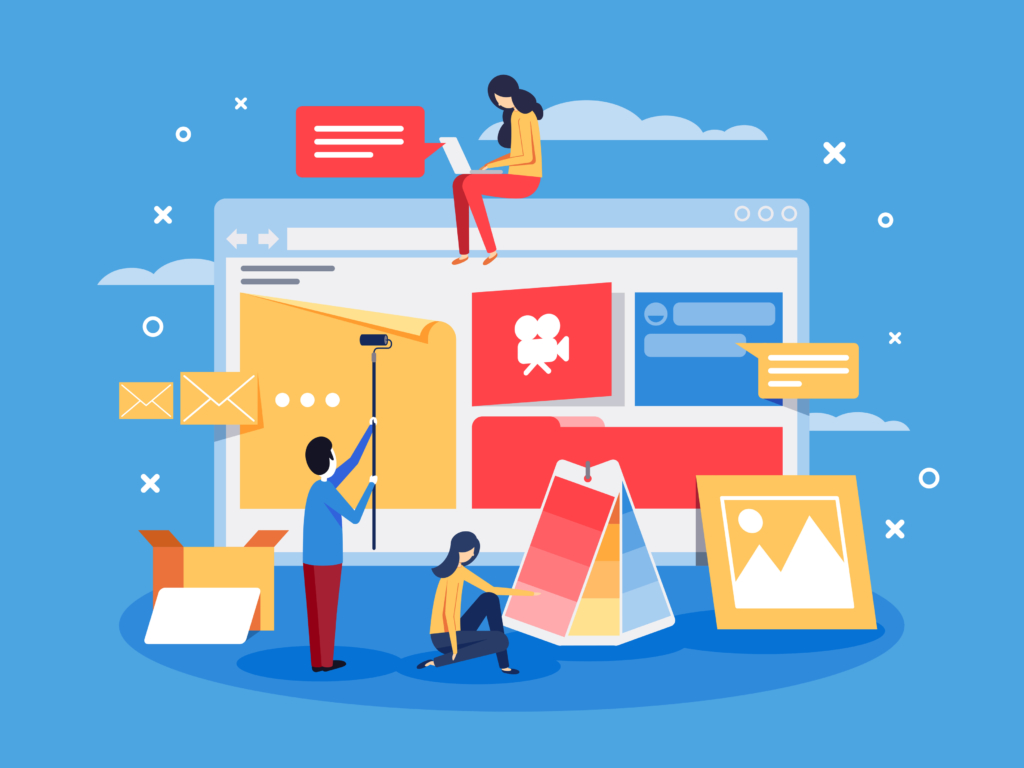Don’t have time to build a website? Here’s what you can do in the meantime.
 Some busy painting professionals simply don’t have the time or resources to build a company website. Instead, many opt for a Facebook business page that becomes their go-to source for finding customers and communicating with them. It’s not a bad online marketing start, but there are some pitfalls to staying this course for the long haul. Here, online marketing experts explain why:
Some busy painting professionals simply don’t have the time or resources to build a company website. Instead, many opt for a Facebook business page that becomes their go-to source for finding customers and communicating with them. It’s not a bad online marketing start, but there are some pitfalls to staying this course for the long haul. Here, online marketing experts explain why:
OWNERSHIP AND CONTROL
Ownership is the key concept painting professionals need to understand when it comes to a website vs a Facebook business page, says Logan Shinholser, founder of Full Sail Marketing, an agency serving contractors.
“With a website you own it; with a Facebook page, you don’t,” he clarified.
It can be dangerous to rely solely on a social media or home-improvement platform to market yourself for an extended period of time because if you eventually choose to leave them, you’ll need to start a profile elsewhere from scratch, and “In those situations, your entire brand can go away,” Shinholser added.
And, frankly, Facebook clearly doesn’t value your company. In 2018, Mark Zuckerberg vowed to re-emphasize Facebook’s intended use for friends and families, so thanks to some algorithm tweaking, painting professionals may now have only a fraction of their Facebook contacts see their reviews and photos, whereas around 50% of them did in the past, Shinholser noted.
AN ALTERNATE APPROACH TO STARTING OUT
Those who don’t have the time or budget to create a website can still initiate a strong online marketing strategy.
“It’s still best practice to have your own website to help solidify your brand, but you don’t have to do it right away,” said David Chism, founder of A David Creation marketing.
If you’re not yet ready to create your website, Chism recommends starting out by creating a Google My Business profile, a Facebook business page (for a small fee, try the ‘boost’ feature for target audience lead generation, he adds), and then run a small Google Adwords campaign for certain keywords. The ads in the keyword campaign can be linked to a simple landing page that contains your logo, contact information, and even a promotion.
This comprehensive approach can help generate leads by targeting keywords your customers might use and letting the general public know about your services and expertise. Once leads convert to sales, you can start to gather reviews and project photos. All of that information can be transferred to your website down the road.
Before starting out, Chism says it’s important to create a logo to identify your brand. A graphic designer may cost you a few hundred dollars or more, but it’s money well spent, he says.
CAST A WIDE NET, WEBSITE BASICS
Shinholser also emphasizes the need to cast a wide online marketing net. He encourages clients to have YouTube Channels, Pinterest profiles, and other social media pages, all of which can ultimately link to your future company website.
When building your site, he offers these three tips:
- Make sure your contact information is easy to find
- Create an ‘About Us’ page to tell your company story
- Minimize your focus on painting; instead, focus on the customer experience. Also, answer questions you know they’ll ask on subjects such as: warranties, estimates, work processes, etc.
“Step away from painting and move more into reassurances and let people know ‘this is what it looks like to work with us,’” he said.
Find more marketing tips for your painting business at: inpaintmag.com


